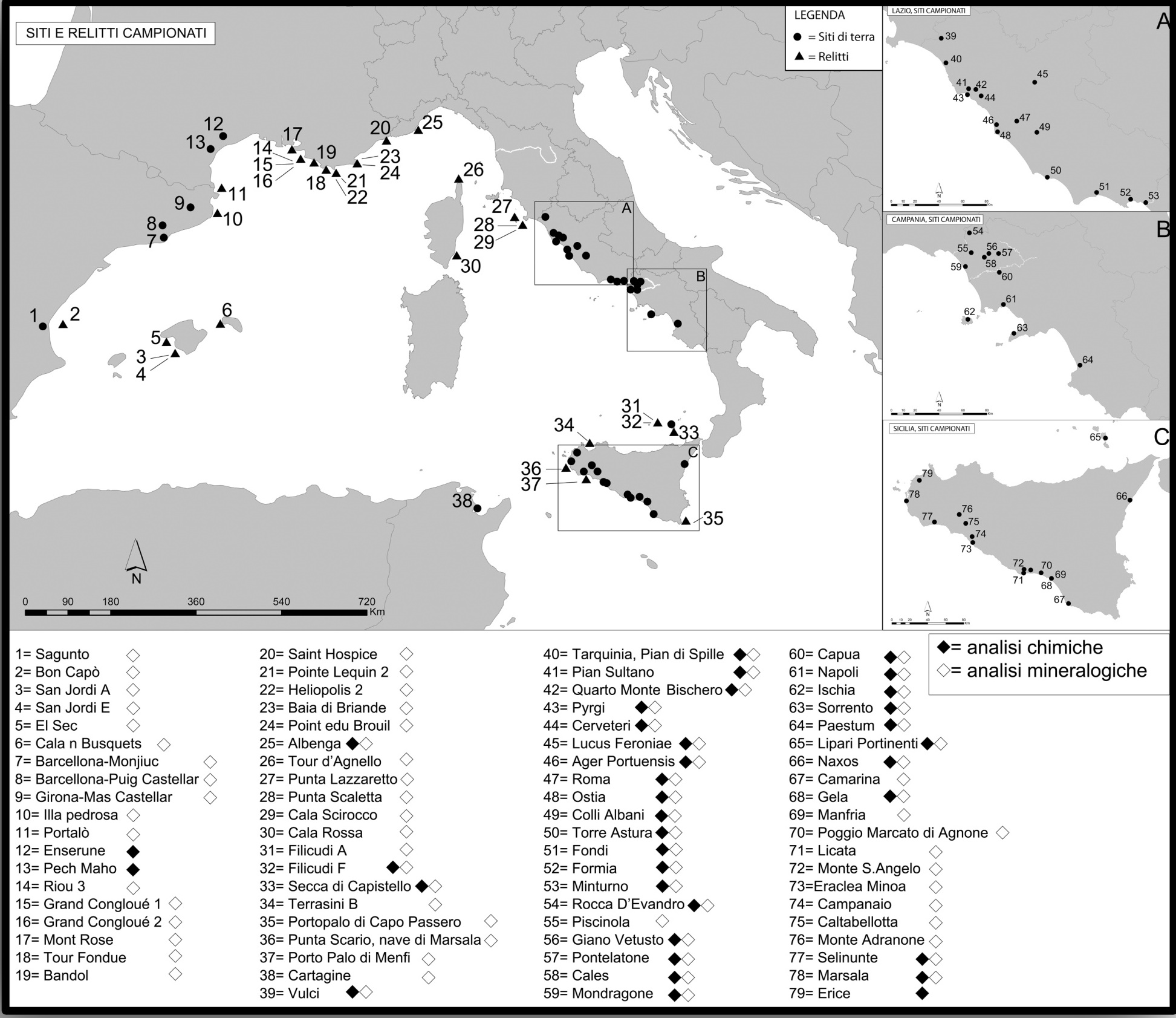WHAT IS IMMENSA AEQUORA?
 The project IMMENSA AEQUORA, developed within the FIRB - MIUR financing program, aims at improving the knowledge of the Roman economy and trade in the Western Mediterranean Sea (the 4th century BC – the 1st century AD), thanks to the use of modern research methodologies.
The project IMMENSA AEQUORA, developed within the FIRB - MIUR financing program, aims at improving the knowledge of the Roman economy and trade in the Western Mediterranean Sea (the 4th century BC – the 1st century AD), thanks to the use of modern research methodologies.
The project is focused on the study of pottery production centers and related ceramics. New investigations have been carried out, whilst some are still on-going. Pottery is very common in archaeological records and is one of the most important markers used by archaeologists to date contexts, reconstruct trade routes and economic patterns of urban sites and sharpen our understanding of the technical level of ancient societies. The core of the methodology applied in the project is the integration of archaeology and archaeometry (in particular, paste computational analyses to detect the provenance of raw materials). For ceramics, especially, the existing data on Central and Southern Italy production centers, distribution and trade networks are being gathered to offer a new understanding and interpretation of them.
A further goal is to study the shipwrecks from the Western Mediterranean that transported the ceramics produced in Italian workshops.
The project includes many databases that provided access to various types of information about contexts, ceramics, laboratory and residue analyses.
Recent research has also focused on wine and production structures as well as on the study of the ancient agricultural landscape.
Papers and informations about seminars and conferences related to the themes of the project are available on the internal pages of the site.
OBJECTIVES
• To call attention to the areas of ceramic production that key roles in the area of the Tyrrhenian
• to determine, also in laboratory, the types of ceramics that were widely circulated;
• to highlight the methods of work employed in the ceramics workshops;
• to investigate the economic structures used in production and distribution;
• to study the agricultural landscape in some areas;
• to establish eventual connections between technological development and socio-economic changes in some sites/contexts.
• to place archaeological research on material culture into the context of the wider debate on the ancient economic history.
LINES OF RESEARCH
• EXCAVATIONS AND SURVEYS
• ARCHAEOLOGY OF PRODUCTION
• ARCHAEOLOGY OF TRADE
• ARCHAEOLOGY OF FOOD
• ARCHAEOMETRY
• OTHERS
PROJECTS












